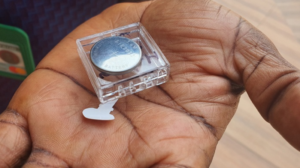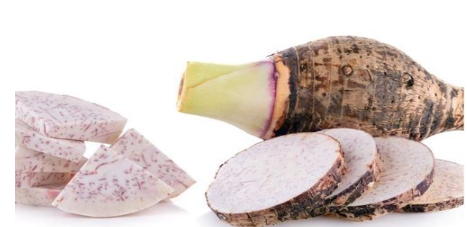adverts
A team of scientists from Kwame Nkrumah University of Science and Technology (KNUST) has pioneered an innovative method to convert taro (Kooko or Brobe) peels into high-performance batteries.
This breakthrough, recently published in the journal Energy Storage, could significantly transform the energy storage sector by turning food waste into a renewable energy source.
Leading the research is Dr. Daniel Nframah Ampong, a member of the KNUST Centre for Engineering Materials Research (KCEMR). He explained the environmentally friendly process the team employed to synthesise activated carbon from taro peels.
adverts
“We used an environmentally friendly approach to synthesise activated carbon from taro peels. These waste materials contain properties or functional groups that we believed would enhance the performance of energy storage devices,” Dr. Ampong stated.
The primary objective of the study was to transform taro peels into activated carbon, which was then assessed for its potential use in energy storage applications.
Currently, the market relies heavily on activated carbons manufactured through hazardous and toxic processes. However, the KNUST team drew inspiration from the traditional charcoal-making methods used in Ghanaian villages.
“We decided to come down to our level and use the process of producing charcoal in our villages. We mimicked that process using crucibles, and in the end, we were able to synthesise activated carbon with properties comparable to commercially available activated carbons,” Dr. Ampong revealed.
The material produced demonstrated remarkable energy storage qualities, offering a sustainable alternative to conventional battery components.

This development aligns with Ghana’s renewable energy agenda, which seeks to increase the country’s renewable energy mix. Dr. Ampong emphasised the importance of efficient storage systems for excess renewable energy.
“The purpose of the research is to get storage systems to store renewable energies when they are in excess so that when needed, they can be effectively utilised,” he explained. “We want to produce something that is eco-friendly, with a cheap synthesis process, and using locally available starting materials.”
Professor Kwadwo Mensah-Darkwa, Dr. Ampong’s supervisor and research lead of the Energy Materials Research Group, highlighted ongoing efforts to utilise biowaste for energy storage solutions.
“There has been significant progress in using biowaste materials to drive our energy storage agenda. Our goal is to develop an eco-friendly method for creating materials for energy storage devices, and this is what we are striving toward in our lab,” he said.
Recent investments in laboratory equipment through the KNUST Engineering Education Program (KEEP) have further enhanced the university’s research capabilities.
“We now have equipment to test these assembled cells, meaning the output of our research will be more effective, allowing us to explore other opportunities,” Prof. Mensah-Darkwa noted. However, he acknowledged that additional material characterisation techniques are needed to validate properties required for specific applications.
Looking ahead, Prof. Mensah-Darkwa expressed optimism about the future of their work.
“If we build on our expertise, we can explore scaling up this technology and making a real impact. There is great potential in this field. While we are still some distance from producing our own batteries, we are steadily moving toward achieving this locally,” he concluded.
This research marks a significant step forward in utilising biowaste for energy storage, reinforcing Ghana’s commitment to sustainability and innovation in renewable energy.
GOT A STORY?
Contact/WhatsApp: +233243201960 or Email: manuelnkansah33@gmail.com


